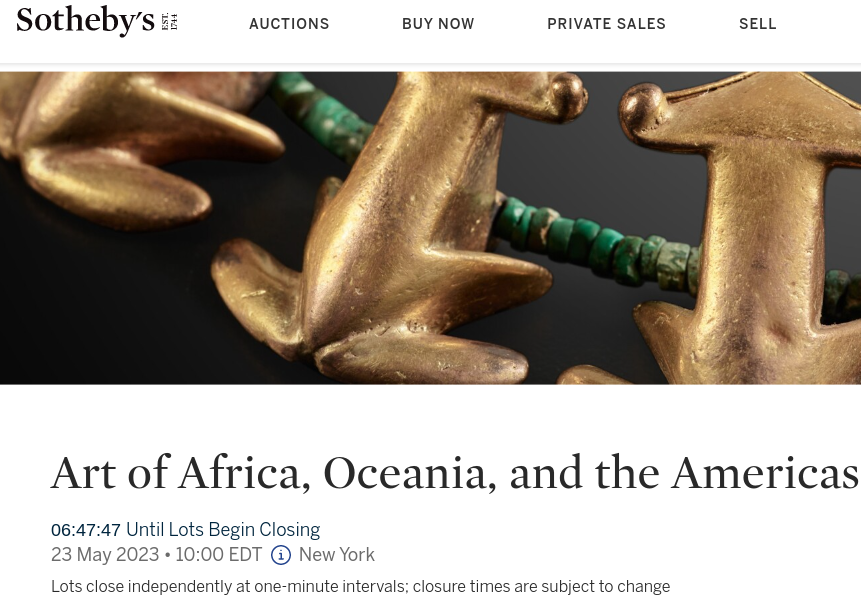With numerous art platforms, events, and fairs, how can you navigate acquiring African art for your collection? African art is highly valued, with rich history and culture, attracting investors. As a new collector, entering the art world may seem challenging. However, collecting African art offers a vibrant and compelling opportunity. In this guide, we will explore four essential points to consider when collecting African art for investment purposes.
- Selecting Authentic Artworks:
First and foremost, the artwork has to be authentic, compelling, and breathtaking. It’s not so hard to find African art that’s authentic as African creatives experiment with an array of materials and have forged their styles. From yarn on canvas to bamboo barks, there’s an array of authentic African art to choose from today. To build a valuable collection, focus on acquiring authentic African artworks. Research reputable galleries, auction houses, and art fairs specializing in African art. Authenticate artworks through provenance, artist signatures, certificates, and expert opinions. This ensures the credibility and value of your acquisitions.
One such example can be Sotheby’s. Sotheby’s is hosting an auction titled “Art of Africa, Oceania, and the Americas,” celebrating remarkable civilizations and cultures. This New York auction highlights the rich heritage of sub-Saharan Africa, mystical Pacific Islands, captivating Pre-Columbian Mesoamerica, and spiritual North American cultures. Private collections and estates across the United States contribute fresh-to-the-market artworks, emphasizing the artistic accomplishments of these extraordinary cultures.
In this highly anticipated event, art enthusiasts and collectors have the opportunity to acquire exceptional pieces that carry immense historical and cultural value. The auction features a diverse range of artworks, including sculptures, masks, textiles, ceramics, and paintings. With each lot, bidders immerse themselves in the artistic expressions of these ancient civilizations, experiencing the beauty and significance of their creations firsthand.

As you participate in Sotheby’s auction, keep in mind the importance of thorough research and authentication. Consult experts and provenance records to ensure the legitimacy and integrity of the artworks you intend to acquire. Take this chance to enhance your collection and support the preservation of these captivating cultures. Sotheby’s annual New York auction offers an extraordinary opportunity to explore masterpieces representing the artistic brilliance of ancient civilizations. Explore, bid, and become a custodian of these extraordinary cultural treasures.
- Understanding Market Trends and Values:
The art market, as a luxury market is not as regular as the normal market dictated by supply and demand, especially when dealing with African art. As a new collector, it is important to understand the different trends, customer tastes and preferences, etc as it will dictate the value of your art. The African market has grown significantly in the past decade. For collectors, it is important to understand the evolving landscape and seize the opportunities it presents.
The Art Basel and UBS Art Market Report 2023 provides valuable insights into the African art market, highlighting its potential and influence on the global stage. As this year’s report indicates, African art has gained recognition and attention from collectors, institutions, and investors worldwide. The market sees more auctions, fairs, and exhibitions, showing a growing interest in diverse African artistic expressions. Collectors actively acquire works from established and emerging artists, recognizing their cultural significance and growth potential. The report stresses understanding local art scenes and engaging with artists, curators, and gallerists for insights. Building relationships in the African art community unveils new talents and exclusive artworks.
Stay informed about market trends, auction results, and recent sales of African art by utilizing platforms like art basel, Sotheby’s, artsy, etc. Monitor pricing patterns and consult experts to make informed investment decisions. Research the demand for specific artists, movements, and themes. This knowledge will help you gauge the potential value and growth prospects of your collection.
- Building Relationships and Networks:
There’s a variety of art fairs going on all over the world, providing exciting opportunities for art enthusiasts to explore and connect with artists, galleries, and collectors. Whether you prefer attending art fairs virtually or physically, these events offer a platform to build valuable relationships within the art community.

To build meaningful relationships at art fairs, it’s important to approach them with a curious and open mindset. Engage with artists and gallery representatives, asking questions about their works, artistic processes, and inspirations. Take the opportunity to learn from their expertise and gain a deeper understanding of the art on display. Networking events and panel discussions are often organized alongside art fairs. Attend these sessions to connect with professionals in the art industry, including curators, collectors, and critics. These interactions can lead to valuable connections and insights into the art world.
Follow up with the contacts you’ve made, express your appreciation for their work, and continue to engage with their artistic endeavors. Building strong and genuine relationships within the art community can contribute to your personal growth, broaden your perspective, and potentially open doors to exciting collaborations and opportunities.
- Preservation and Legacy Planning:
Lastly, you need to understand how to preserve your art. Preservation is crucial for maintaining the integrity and value of your African art collection. Consult conservation experts for guidance on handling, framing, and storage to ensure proper care. Platforms like Artsy help you manage your collection for investment purposes. Implement effective preservation strategies to protect your artworks for future generations. Consider documenting your collection, maintaining records, and engaging in estate planning to preserve its legacy. By incorporating long-term vision and legacy planning, you can ensure the continued appreciation and cultural significance of your African art collection.
Conclusion:
Collecting African art for your investment portfolio offers a unique and enriching opportunity. By selecting authentic artworks, understanding market trends, building relationships, and prioritizing preservation and legacy planning, you can build a valuable collection that celebrates African culture and contributes to your investment goals. Embrace the vibrant creativity and cultural significance of African art as you embark on this rewarding investment journey.



